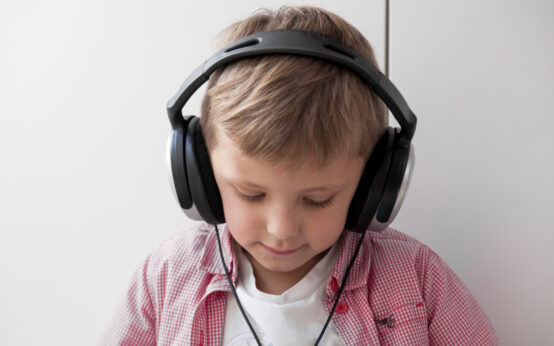Introduction
Children with neurodivergent conditions, especially those with autism, often encounter significant challenges when it comes to the daily task of toothbrushing. The unique sensory experiences of autistic children, coupled with their heightened sensitivity, can make the toothbrushing process stressful. In this article, we delve into the specific challenges faced by children with autism during oral care and explore effective strategies to overcome these hurdles.
Sensory Challenges
Autistic children, who may already struggle with various aspects of daily life, often face sensitivity issues that extend to the sense of touch. The sensation of a toothbrush, coupled with the strong flavors and foaming of toothpaste, can evoke anxiety in these children, making toothbrushing a daunting task.

Hypersensitivity and Hyposensitivity
A substantial percentage of autistic children, approximately 70%, experience Sensory Processing Disorder (SPD), with up to 95% showing atypical responsivity to sensations. Some children exhibit hyposensitivity, resulting in reduced feeling and potential numbness during toothbrushing, causing discomfort and anxiety. On the other hand, hypersensitivity can lead to heightened awareness, triggering overstimulation during brushing. However, careful brushing techniques can mitigate the stress associated with this process.

Tips for Easier Toothbrushing
Ensuring proper oral hygiene for children with autism is crucial to prevent future issues. Implementing the following tips can significantly ease the toothbrushing process:
- Choose a Suitable Toothbrush: Opt for brushes with softer bristles to minimize discomfort, especially for children with hypersensitivity.
- Get the Right Toothpaste: Consider using fluoride-free and unflavored toothpaste to eliminate sensations causing distress to the child.
- Try to Floss: While challenging, flossing is essential; give it a try, but don’t stress if it proves too much for your child.
- Teach Independence: Encourage your child to brush their own teeth, fostering independence and reducing anxiety during the process.
- Use Incentives and Rewards: Motivate your child by offering incentives or rewards for cooperation during toothbrushing, creating a positive association.
- Establish a Comfortable Setting: Choose a relaxed environment, like your child’s bedroom, to make the toothbrushing experience more comfortable.

Correct Way to Brush Teeth
Follow these steps to ensure effective toothbrushing:
- Brush the top and bottom front teeth, inside, outside, and chewing surfaces five times each.
- Move to the bottom back teeth, then the top back teeth, brushing all surfaces five times.
- Brush the top and bottom incisors inside and outside five times each.
- Finish with a quick once-over before rinsing with water or mild mouthwash.

Recommended Toothpaste and Toothbrushes
Multi-Sensory Dental Solutions
Flavorless Oral Care Gel is an innovative toothpaste crafted specifically for individuals who exhibit sensitivity to robust flavors. This unique product boasts a non-foaming formula while retaining the optimal fluoride content necessary for effective dental hygiene.
Dr. Alan’s Unflavored Gel Toothpaste is not only SLS-free, eliminating foaming, but it also refrains from incorporating artificial flavorings, dyes, and intense tastes. Created with a focus on affordability, this toothpaste caters to the dental needs of young children and those with heightened sensitivity.
Eco-Friendly Kids Oral Gel by Lily and Luke is a vegan toothpaste completely devoid of fluorides. Formulated without harsh chemicals, gluten, or dairy, this toothpaste utilizes natural ingredients, ensuring it is safe even if accidentally swallowed during brushing.
Dental Care for Unique Needs
The bA1 Sensory – 3-Sided Autism Toothbrush for autistic Kids is a gentle brush clinically proven to simplify and reduce stress during teeth cleaning for autistic children. Its innovative design covers twice as much surface area with each stroke, significantly reducing the time required for brushing.
The Gentle Touch Supportive Needs Toothbrush by Radiant Smiles is specifically engineered for children with sensitive gums. Featuring bristles that curve into an arch instead of protruding straight, this toothbrush minimizes the sensation of brushing, making it more comfortable for your child.
Happy Smiles 360 Degree Electric Toothbrush offers an automated brushing experience with ultrasound technology and thousands of bristles. Enhanced with engaging sounds and a singalong voice, this toothbrush, shaped like a mouthguard, efficiently cleans all teeth in under a minute with minimal effort, making dental care an enjoyable experience for children.
Conclusion
By understanding the challenges associated with toothbrushing for children with autism and implementing tailored strategies, parents can ensure a more comfortable and positive oral care experience for their neurodivergent child.
Source
- Baranek, G. T., David, F. J., Poe, M. D., Stone, W. L., & Watson, L. R. (2006). Sensory Experiences Questionnaire: discriminating sensory features in young children with autism, developmental delays, and typical development. Journal of Child Psychology and Psychiatry, 47(6), 591-601.
- Little, L. M., Wallisch, A., Pope, E., & Dunn, W. (2016). Acceptability and impact of a parent-implemented intervention to increase naturalistic language and play in children with ASD. American Journal of Speech-Language Pathology, 25(4), 654-669.
- Srinivasan, S. M., Kaur, M., Park, I. K., Gifford, T. D., & Marsh, K. L. (2015). Bimanual coordination patterns in children with autism spectrum disorder. Autism Research, 8(6), 717-727.







